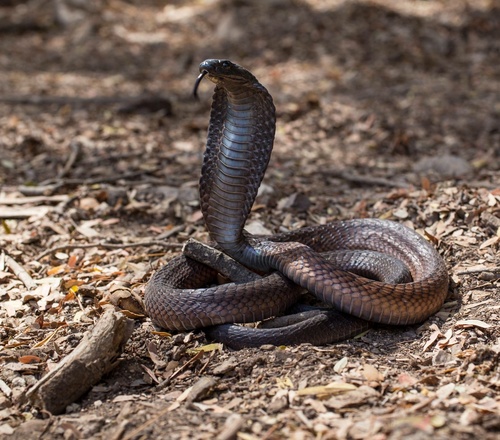
Arabian Cobra
The Arabian cobra, Naja arabica, elegantly unfurls its distinctive hood in desert landscapes. Adapted to arid climates, it glides through the sands at dusk, helping balance ecosystems by preying on rodents. Its striking presence is both a symbol of desert mystique and a vital ecological player.
Length: 2.4384 m
Size
Yellow, Gold, Light-Brown
Color
High
Aggression
Least Concern
Conservation Status
Unknown
Population Trend
Characteristics
The Arabian cobra (Naja arabica) is native to the Arabian Peninsula, known for its striking hood and potent venom. It inhabits arid regions and is active during the cooler parts of the day. Its diet includes small mammals and birds, playing a crucial role in controlling rodent populations.
Distribution Range of the Arabian Cobra
Naja arabica, commonly known as the Arabian cobra, is native to the Arabian Peninsula. Its geographical distribution includes countries such as Saudi Arabia, Yemen, Oman, and the United Arab Emirates.
Arabian Cobra's Habitat
Environmental Conditions
The Arabian cobra typically inhabits arid to semi-arid environments. It is found in deserts, rocky areas, and foothills, often near water sources such as oases. The climate in its native region is characterized by high temperatures and low rainfall.
Ecological Niche
Naja arabica is a terrestrial snake that occupies a niche as a predator of small mammals, birds, and other reptiles. It plays a role in controlling the population of these species. The snake is adapted to its harsh environment with behaviors such as burrowing and seeking shade to manage body temperature.
Copyright @ Nature Style Limited. All Rights Reserved.
 English
English